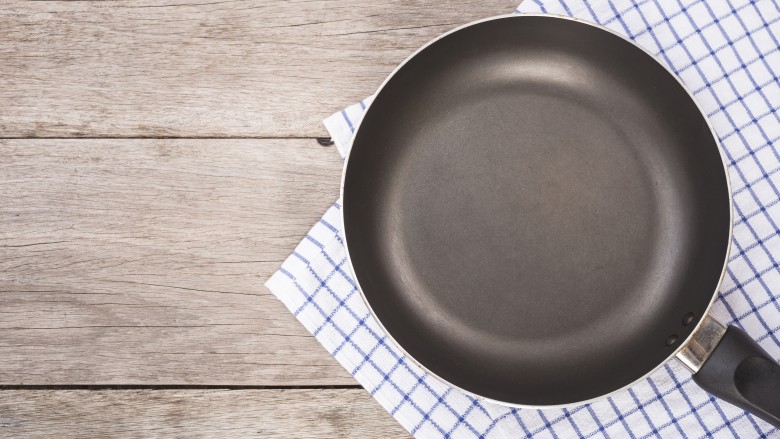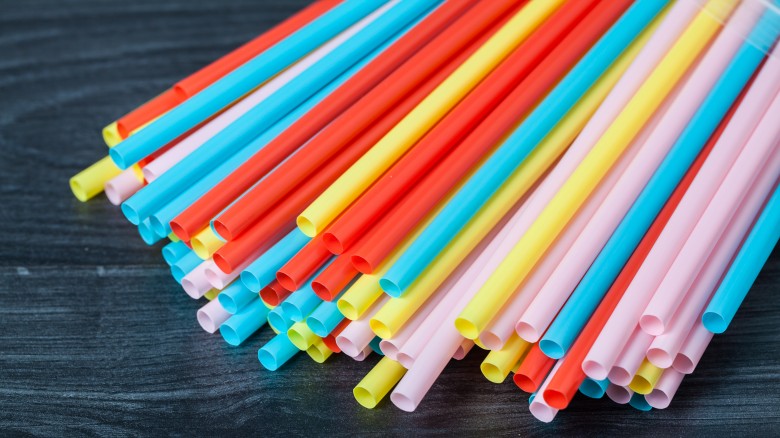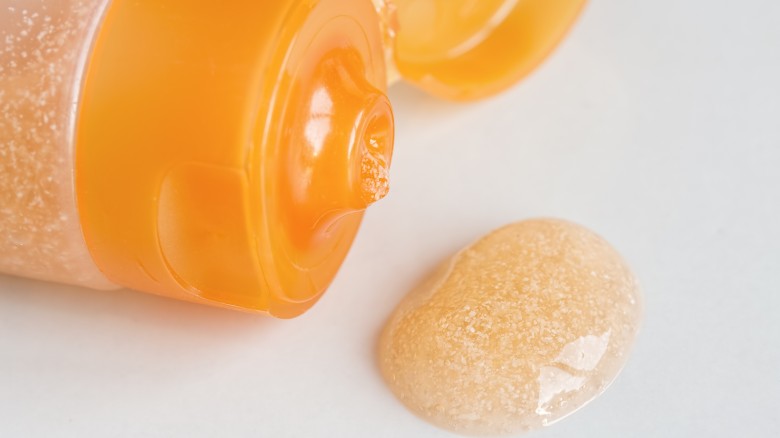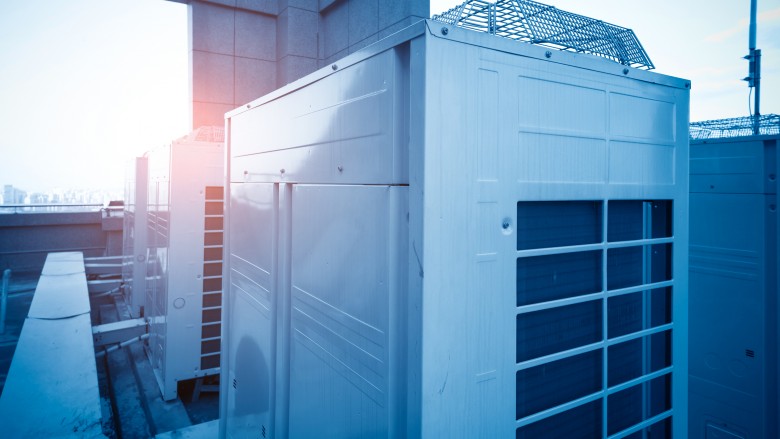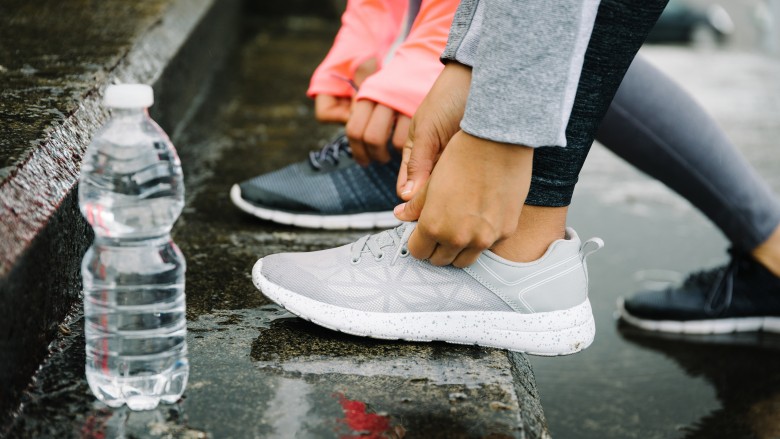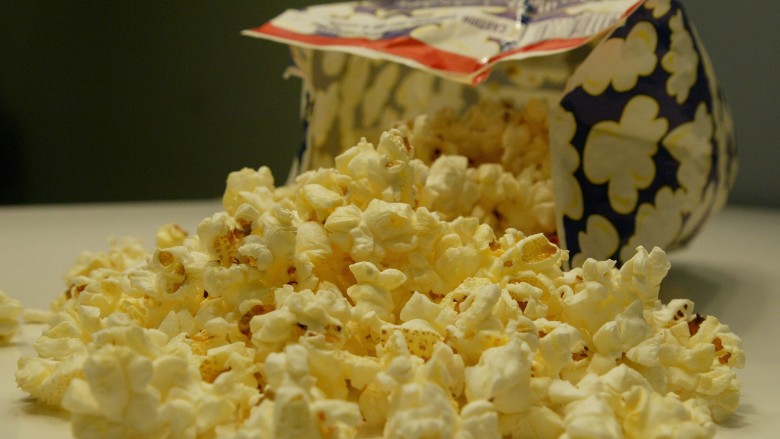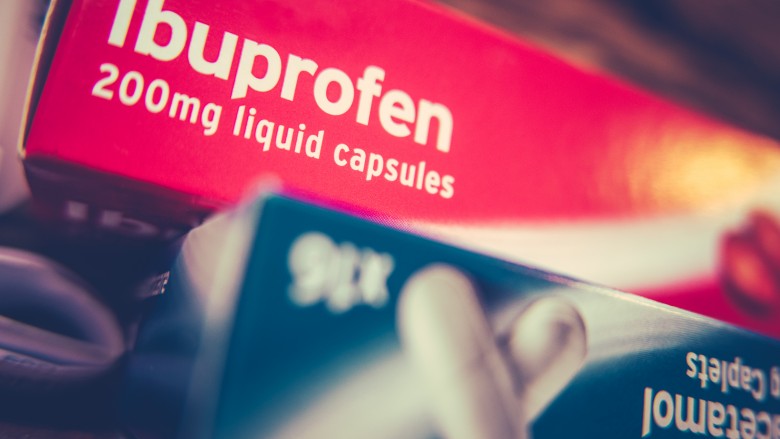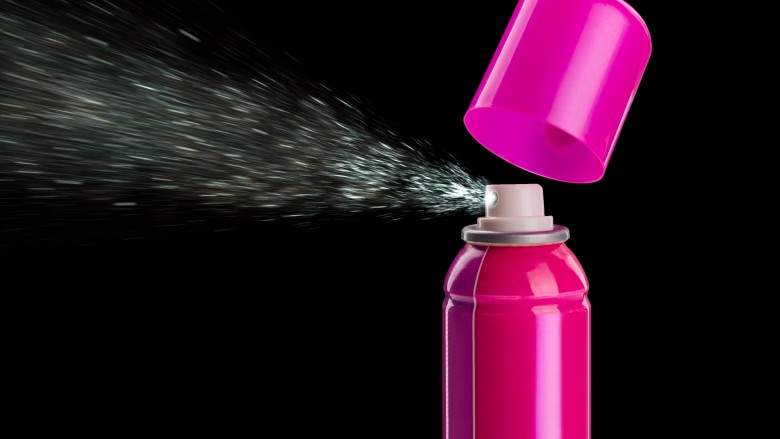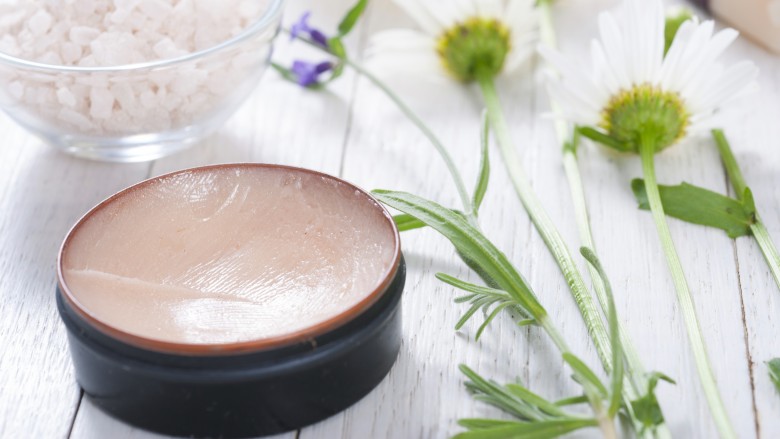Convenient Products That Are Destroying The World
There's nothing wrong with convenience. As a species, we've worked long and hard to develop drive-throughs and tea in a bag to make our lives easier. We're lazy and not afraid to work hard so we can be even lazier in the long run, but sometimes, all that convenience comes at a terrible price.
K-cups
No one's exactly sure just how many times all the used K-cups could circle the planet, but that video claims that the cups sold in 2014 alone could go around the world 10.5 times. That's a pretty bleak picture, and not surprisingly, it's a little off.
It's more like 12 times. That's a ton of K-cups, and precisely, that's about 9.8 billion portion packs. That's the most the company would say about the huge amount of garbage they're dumping into the environment, and they also admit that none of them are recyclable. Critics say the heaping pile of garbage is uncalled for, especially considering Keurig employs a Sustainability Officer. That job surely involves just six hours a day playing Call of Duty. Their 2014 promise included coming up with a plan for making recyclable cups ... by 2020.
Keurig Green Mountain got ahead of schedule (although the New York Times pointed out that it took less time for us to figure out how to put a man on the Moon), and they released their recyclable cups in 2016. But, as The Times also pointed out, they're not compostable or reusable, and the "recycling" part of the claim rests on the shoulders of some poor sap who has to dissemble them bit by bit.
John Sylvan, creator of the Keurig and K-Cup, was quoted as saying, "I feel bad sometimes that I ever did it." What more do you need to hear?
Teflon
We don't care how much you like to cook—no one says their real passion is cleaning up the kitchen afterward. That's why Teflon is awesome. But while it might make cleanup a breeze, we've known for a while now that the stuff is creepily leaking into the environment.
You've heard of CFCs, those coolants that were so vilified after they'd been used in almost everything for decades. Without throwing out too many scientific words that we can't really pronounce anyway, let's just say CFCs were replaced with two other coolant chemicals. Those chemicals produce trifluoroacetic acid (TFA) when they break down, but when the environmental levels of TFA were found to be way higher than they should have been, researchers started looking elsewhere. When University of Toronto chemists started mucking about with the procedure used to get Teflon to stick to everything from pans to car parts, they found it was producing TFAs.
They also found that if you're using your Teflon-coated pans on high heat, you're causing the Teflon to break down and emit more chemicals at a faster rate. You might even be eating it—and you probably are. The chemicals Teflon releases are toxic to humans and animals, and they've also been on the receiving end of a lawsuit that claimed DuPont knowingly contaminated West Virginia waterways, leading to a whole bunch of nasty health problems for everyone in the area. And that's all because you don't want to scrub the pan after making your deconstructed grilled cheese with truffle compote. À la mode. Or something.
Straws
Maybe you should rethink this whole straw thing.
Straws have been around forever, but it was only in the 1950s and 1960s that we saw a massive jump in straw use with the fast food industry. That's also when straws became a one-time use product, and things started going sideways for a few reasons. Not even counting the oil, gas, electricity, and raw materials that go into making straws, there's an even bigger problem. Straws are bad enough when they make it into landfills, but they're almost always in the top ten biggest offenders gathered during coastal cleanups. It's estimated that around 90 percent of large, ocean-dwelling wildlife—that's things like sea birds, dolphins, and whales—have swallowed straws.
If you're curious about how many straws we're talking there, the answer is somewhere around 500 million per day, and that's only in America. That's not a typo. It's enough straws to be laid end to end around the planet twice. Next time, tell them you don't want a straw. Even better, get a reusable mug. You might even get a discount, and everyone loves those.
Microbeads
We get it, you like to feel pretty. Who doesn't? But if you use any sort of cosmetic, body wash, or cleaning product with microbeads, your squeaky-clean skin is coming at a huge price.
Those microbeads are plastic, and they were originally created for medical purposes that are completely legit. The tiny beads could get into places other things couldn't, which makes them great for, say, attaching on a cellular level. Unfortunately, that also makes them an environmental nightmare. Since they're so tiny, most water filters will miss them, and they'll end up in the ocean. As of 2015, it was estimated that somewhere around 808 trillion microbeads were flushed into the great American drainage system every single day. They're not filtered out, and that means they're eaten by whatever poor creature happens to be in the area—and 808 trillion of anything will go a long way.
If you're not concerned about the ocean's creatures, what about your own diet? If you don't like your oysters seasoned with microbeads, you should probably rethink just how badly you need them to get that super-shiny skin.
Air conditioning
Air conditioning is, of course, meant to keep you cool when the temperature outside is unbearable. But because Mother Nature has a wicked sense of humor—and she loves irony—the more your run your air conditioner, the hotter you're making the outside temperature you're trying to get away from.
Part of the problem comes from the insane amount of energy needed to keep air conditioning running on a large scale. Estimates suggest that in the US alone, around 100 million tons of CO2 is dumped into the atmosphere every year, just from air conditioning. Then while the US has banned the use of both CFCs and HCFCs, developing countries have gotten a free pass to continue to use the ozone-destroying versions of air conditioning coolants until at least 2040, simply because they're cheaper to make. These are some of the same countries that are steadily increasing their demand for ACs, and here's some food for thought: ever wonder where all that hot air goes?
If you said, "Nowhere, it's just cooled," then Bill Nye wants to have a long conversation with you. Those air conditioning units are cooling air inside but heating air outside, and hot air rises. It's a phenomenon that has a name—an urban heat bubble—and it can cause all kinds of crazy weather. So, for the sake of the environment, tough it out. Or move somewhere sane.
Bottled water
Whoever invented the idea of bottled water was a darn genius. Who would have thought that they could not only charge money for something freely available to most people, but turn it into a multi-billion-dollar business? Granted, there are some places where bottled water is the only option for clean drinking water, but elsewhere, it's just trendy.
And, it's hugely wasteful. A whole host of environmental problems come with your need to carry around a pretty bottle, so we'll be quick. Only about half of bottled water (55 percent) is sourced from a natural spring, and the rest is tap water. When it's actual spring water, the transportation cost involved in getting it from the spring to the shelves can be as much as making and bottling the water itself. Only some bottles can be recycled—and remember, that doesn't take the plastic away, it just postpones the problem—and those that make it into landfills take about 1,000 years to degrade.
Have you heard any of the stories of California droughts in the last few years? Consider that it takes three liters to manufacture a single liter of bottled water, and at the same time California residents were ordered to restrict their water use in the face of drought, Nestle continued to bottle and ship California's natural spring water at a rate of 36 million gallons a year. If you're saying, "What?!" you're not alone.
Microwave popcorn and pizza boxes
Ever wonder how microwave popcorn works? We didn't either, but now we know that it's similar to the science behind Teflon. The inside of your popcorn bag is coated with fluorotelomers, and that keeps all that buttery goodness from leaking through the bag. The problem is that heat breaks these fluorotelomers down, and heat is exactly what you need to make the popcorn. It's a lose-lose situation. The same chemicals are used in lining pizza boxes to keep those stable enough to deliver your pizza in, and heat's a factor here, too.
For a long time, agencies like the EPA avoided coming out and saying these things are bad for you and the environment, and five years after the first warning signs, the FDA finally banned the use of three different brands of grease-resistant chemicals because of links to birth defects and cancer. That didn't happen until 2016, a full 11 years after Burger King stopped using them because of the health risk. Just let that sink in.
Pharmaceuticals
Granted, some pharmaceuticals are absolutely necessary, and we're not talking about those. We're talking about that painkiller you pop when you think you might be getting a bit of a headache, or when you're feeling a little achy from overdoing it at the bar last night. We're talking about those things in your medicine cabinet that you keep just in case.
In 2014, a worldwide review of the presence of detectable levels of pharmaceuticals in the environment found them in 71 different countries. They were present in the drinking and groundwater, and included over-the-counter pain medications like paracetamol, ibuprofen, naproxen, and acetylsalicylic acid, or aspirin. From inland groundwater, these medicines have already found their way into seas and oceans, and that's a big problem. They've already been shown to be harmful to the fish and animals that live in the world's waterways, and they're there in levels approaching a global emergency.
And they're getting there because of you. Every time you pop an aspirin for whatever aches and pains you're complaining about that day, you're excreting as much as 90 percent of what's in that pill. So, instead, maybe you should suck it up.
Aerosol cans
We know what you're thinking. Aerosol cans used ozone-damaging CFCs once upon a time, but those were banned in the 1970s (in the US at least). But the cans still contain compressed gases that are doing their own part for global warming. They also have some pretty nasty-sounding things called volatile organic compounds, and we're betting you've never heard anything described as volatile in a good way. These cause another problem: smog. Specifically, they've been linked to asthma.
Technically, aerosols are tiny particles wrapped in and suspended by a bit of gas. They occur naturally—think sea salt and spray—and when they do, they're fine. They work to reflect sunlight, which is good, and they're also the seeds that allow clouds to form, which is also good. In fact, natural aerosols are so good that they cancel out some of the impacts of global warming. Yay, aerosols for all!
But, before you go running out to spray a whole can of deodorant out your window for Earth Day, there's a problem. Artificial aerosols behave differently from natural ones. They don't distribute through the atmosphere in the same way, and they form different types of clouds. The darker color of unnatural aerosols means clouds turn smoky and hazy, and are more commonly associated with thunder and lightning than a pleasant rainstorm. So, aerosols should not be for all.
Lip balm
You use palm oil in several products, so many that huge patches of the rain forest have been razed to make room for palm oil plantations to keep up with demand. Since it's a lucrative business (more lucrative, say, than orangutan-watching), the forests are leveled without thoughts for details like the people and animals living there. Take the Heart of Borneo, a tropical paradise that contains not just a huge amount of biodiversity but a group of indigenous people who have been living there for generations. The Indonesian government has promised to double the palm oil production between 2009 and 2020, and guess who gets the worst part of that deal?
When the Union of Concerned Scientists took a look at how many products we use every day that contain some kind of palm oil, the list is surprisingly long. If you use toothpaste, makeup, sunscreen, shampoo, or, of course, lip balm, you're using palm oil. Your need for smooth lips is putting a serious hurt on species from elephants to orangutans, so it turns out that your mother was right after all: just stop licking your lips.
Disposable coffee cups
Who has time in the morning to make some coffee and put it into a nice, environmentally friendly travel mug, when it's so much faster to just swing through the drive-through somewhere between home and work? So, now you got yourself a disposable coffee cup. Shame on you, because estimates suggest that somewhere around 5,000 disposable cups are thrown away every minute, and that's insane.
Since coffee is both hot and a liquid, the paper needs to be lined to keep the coffee on the right side of the cup. Most are sealed with polyethylene, and once cups are sealed, they can't be recycled without special equipment. They're not made from recycled material, either. Since the seam of the cup touches the coffee you're going to be drinking, it's got to be the first go-around for the wood pulp, lest you get some ex-toilet tissue in your morning coffee.
The problem here is a pretty obvious one, and if you have any doubts, just try to imagine a pile of 2.5 billion coffee cups. Maybe the worst thing about this is that it's completely avoidable, if everyone just remembers to carry a travel mug with them. Some companies—like Starbucks—actively encourage you to bring your own mug, and isn't the environment worth a little compromise on convenience?

